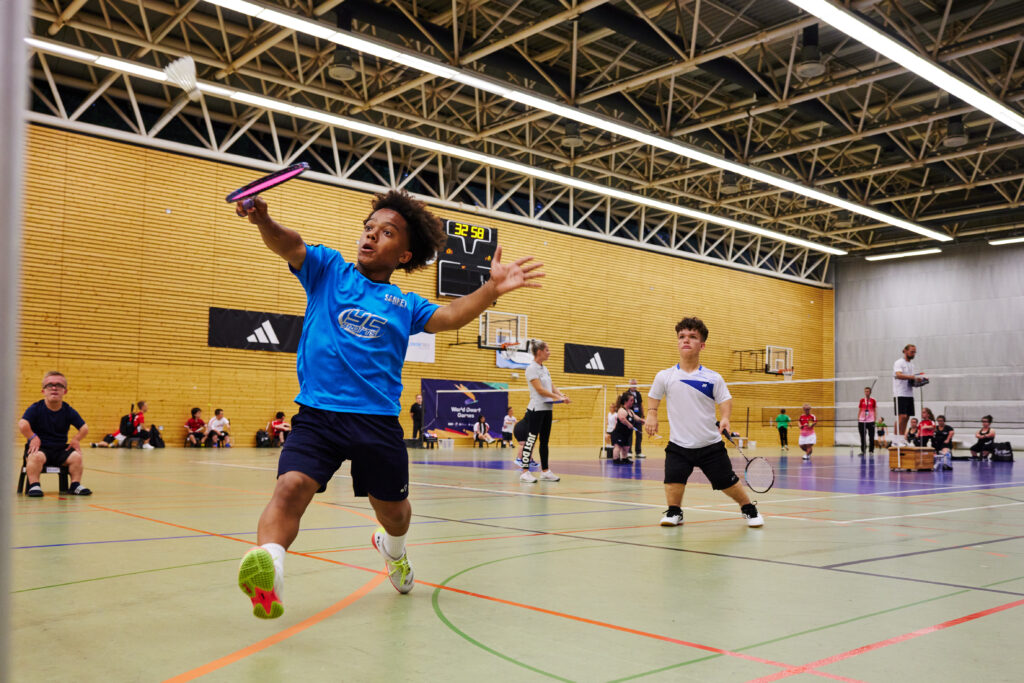Day Four Recap

Day Four continues with Badminton: Don’t lose your feathers now!
On this rainy, yet pleasantly cool fourth day of the World Dwarf Games, the athletes prove themselves on the badminton court: This demanding sport requires skill, strength, and intelligence equally – and our athletes are giving their best. With astonishing hand-eye coordination, they try to hit the shuttle with the right speed and angle into the opponent’s field. In addition, they need to be able to maneuver quickly, while their strategic thinking and quick decision-making play a key role in predicting and countering their opponents’ moves.
With each game that takes a turn, with each movement that writes history, the enthusiasm of the audience grows. Their applause and cheering swell to a crescendo, giving the badminton players extra motivation and energy.
Interestingly, the closest teammates turn into bitter rivals when they compete against each other from the same nation. But despite the intensity of the competition, the sport remains a platform for friendship and respect. At the end of the day, they all share the same passion and give their best to make their nations proud.
After the singles medals have been awarded, it’s time for the doubles. This discipline requires not only outstanding teamwork but also communication skills and strategic thinking. The teams try to coordinate precisely who covers which area of the field, and the competition for the title heats the atmosphere even more.
While the main point of these games is not about winning, it is still worth mentioning: While an adult British man and an Australian woman were victorious in the singles, Canada triumphs in both the women’s and men’s doubles.
Tag Vier geht weiter mit Badminton: Jetzt bloss nicht Federn lassen!
An diesem regnerischen, aber angenehm kühlen vierten Tag der World Dwarf Games beweisen sich die Sportler*innen auf dem Badmintonfeld: Dieser anspruchsvolle Sport erfordert Geschick, Kraft und Intelligenz gleichermaßen – und unsere Athlet*innen geben ihr Bestes. Mit erstaunlicher Hand-Auge-Koordination versuchen sie den Shuttle mit dem richtigen Tempo und im richtigen Winkel ins gegnerische Feld zu schlagen. Darüber hinaus müssen sie schnell manövrieren können, während ihr strategisches Denken und ihre schnelle Entscheidungsfindung eine Schlüsselrolle bei der Vorhersage und dem Kontern der Bewegungen ihrer Gegner*innen spielen.
Mit jedem Spiel, das eine Wendung nimmt, mit jeder Bewegung, die Geschichte schreibt, wächst die Begeisterung des Publikums. Ihr Applaus und ihre Anfeuerungsrufe schwellen zu einem Crescendo an, dass den Badmintonspieler*innen zusätzliche Motivation und Energie verleiht.
Interessanterweise verwandeln sich die engsten Teamkolleg*innen in bitterste Rival*innen, wenn sie aus derselben Nation gegeneinander antreten. Doch trotz der Intensität des Wettbewerbs bleibt der Sport eine Plattform der Freundschaft und des Respekts. Am Ende des Tages teilen sie alle die gleiche Leidenschaft und geben ihr Bestes, um ihre Nationen stolz zu machen.
Nachdem die Medaillen im Einzel vergeben wurden, ist es Zeit für das Doppel. Diese Disziplin erfordert nicht nur herausragende Teamarbeit, sondern auch Kommunikationsfähigkeit und strategisches Denken. Die Teams versuchen präzise zu koordinieren, wer welchen Bereich des Spielfelds abdeckt, und der Wettkampf um den Titel heizt die Atmosphäre noch weiter auf.
Obwohl es an diesen Spielen in erster Linie nicht darum geht zu gewinnen, ist es dennoch eine Bemerkung wert: Obwohl bei den Erwachsenen im Einzel jeweils ein Brite und eine Australierin siegreich waren, triumphiert Kanada sowohl im Frauen- als auch im Männerdoppel.






